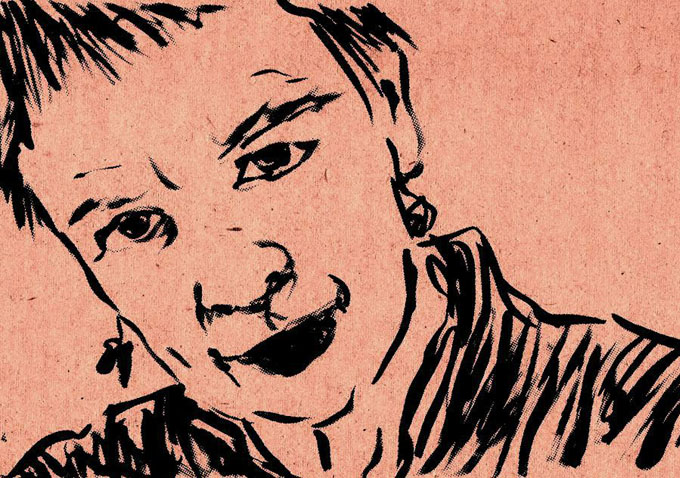 Who does a story belong to? What is the value of a story with only one character? What happens to our love when a loved one dies? These are the central questions fueling the dream-like meditation (or “essay poem”) in film form, “Heart Of A Dog.” Written, directed, and narrated by Laurie Anderson, “Heart Of A Dog” is at turns a haunting, hilarious, muddled, disparate, and deeply emotional film about a woman, her dog, their bond, and the deaths that continue that haunt her.
Who does a story belong to? What is the value of a story with only one character? What happens to our love when a loved one dies? These are the central questions fueling the dream-like meditation (or “essay poem”) in film form, “Heart Of A Dog.” Written, directed, and narrated by Laurie Anderson, “Heart Of A Dog” is at turns a haunting, hilarious, muddled, disparate, and deeply emotional film about a woman, her dog, their bond, and the deaths that continue that haunt her.
At its core, “Heart Of A Dog” is an ode to Lolabelle, the late rat terrier and “spiritual twin” to Anderson. And Lolabelle carries the film in memorable fashion. She is an adorable piano-playing, bird-chasing, sculpture-making ball of love, eager to please and always looking for a chance to have fun — the type of dog the moniker “man’s best friend” was created for. Lolabelle comes to life as affectionate and bouncy on film, but she becomes a character in her own right in Anderson’s expressive paintings and animation — one who is easy to grieve when she passes.
But, like any true essay, Anderson uses Lolabelle as a lubricant to a plethora of other topics, from the dawn of the post 9/11 surveillance state, to the nature of love, and ultimately to death. “Heart Of A Dog” opens with swirling and evocative animation and Anderson recounting the death of her mother, whom she worries she never really loved. It’s this death that swims beneath the currents of the proceeding film, which ultimately culminates in a cathartic emotional release — a sum that is, by quite some strides, more effective than its parts.
For much of its early running, Anderson’s film flows effortlessly between Lolabelle and Manhattan in the wake of the fall of the World Trade Center. The metaphor, though heavy-handed and overly explained, is potent: Lolabelle, young and puppy-like, is New York City before the attack, innocent and ignorant, and so much more vulnerable than she ever truly knew, until a brush with the dangers lurking in the sky.
But this success lends to one of the film’s failings. Aided by a Goya painting and the words of Ludwig Wittgenstein and David Foster Wallace, Anderson packs her film with these connections. But, like many ambitious films, she ends up with too many balls in the air and ideas disappear from the film all together. For a film packed with so much repetition (which, for the most part, is used to great effect), these absences leave a gap, the feeling of something unfulfilled and abandoned; the ideas, like stepping stones, casualties forgotten in the search for something greater. In itself this is no crime. Any good essay asks more questions than it answers. The trouble here is that Anderson opens too many doors and asks too many questions for even the most tightly wound of conclusions to handle without leaving its audience feeling shorted.
Arguably, “Heart Of A Dog” might struggle as a written essay. However, paired with the striking, looping, battered, and jittery visuals and animation, and the lush score, the essay becomes an experience. An experimental musician and visual artist with four decades of experience, Anderson has the prowess to do much of the work of "Heart Of A Dog" on her own (or at least make it feel done on her own), which lends a personal aspect that the film would likely flounder without. The only true misstep in the production is the familiar and lively voiceover that is often oddly juxtaposed with the blustering and brooding scenario surrounding it.
To turn such a personal and individual story into any sort of public art is a daunting task, at which few succeed. But Anderson manages to create something strikingly singular, a glimpse into her consciousness that gropes (sometimes rather blindly) to answer some daunting questions about the human condition. The result is ultimately a warm and hopeful film about life’s delicacy and the value of love. While “Heart Of A Dog” tears through its final third with a great leap from the preceding film, can any art really be faulted for being too ambitious? [B-]
This is a reprint of our review from the 2015 Telluride Film Festival.

